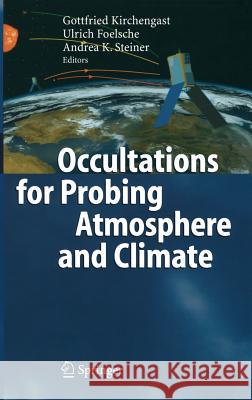Occultations for Probing Atmosphere and Climate » książka
Occultations for Probing Atmosphere and Climate
ISBN-13: 9783540223504 / Angielski / Twarda / 2004 / 408 str.
Use of occultation methodology for observing the Earth's atmosphere and climate has become so broad as to comprise solar, lunar, stellar, navigation and satellite crosslink occultation methods. The atmospheric parameters obtained extend from the fundamental variables temperature, density, pressure, water vapor, and ozone via a multitude of trace gas species to particulate species such as aerosols and cloud liquid water. Ionospheric electron density is sensed as well. The methods all share the key properties of self-calibration, high accuracy and vertical resolution, global coverage, and (if using radio signals) all-weather capability. Occultation data are thus of high value in a wide range of fields including climate monitoring and research, atmospheric physics and chemistry, operational meteorology, and other fields such as space weather and planetary science. This wide area of variants and uses of the occultation method has led to a diversi fication of the occultation-related scientific community into a range of different sub-communities, however. The 1st International Workshop on Occultations for Probing Atmosphere and Cli mate-OPAC-1- held September 16-20, 2002, in Graz, Austria, has set in ex actly at this point. OPAC-1 aimed at providing a casual forum and stimulating at mosphere fertilizing scientific discourse, co-operation initiatives, and mutual learning and support amongst members of all the different sub-communities. The workshop was attended by about 80 participants from 17 different countries who actively contributed to a scientific programme of high quality and to an excellent workshop atmosphere, which was judged by the participants to have fully met the aims expressed.











